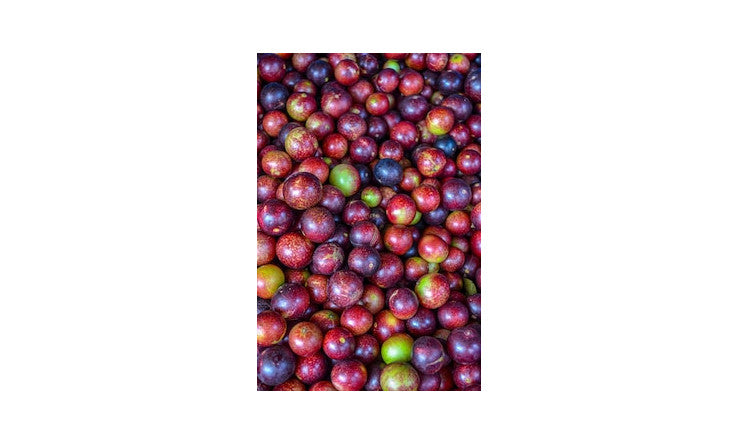Discover these superfoods!
MORINGA
Moringa (Moringa Oleifera ) is a plant native to Africa and Asia. It has been studied for its health properties attributed to its richness in bioactive compounds present in significant amounts in various components of the plant. However, it is the leaves that are the most studied and have been found to be beneficial.
It is explained that moringa leaves are a good strategy for various ailments. They are mainly used for medicinal purposes as well as for human nutrition as they are rich in antioxidants and other nutrients that are generally deficient in people living in underdeveloped countries.
It can be seen in this review that the limited information available on several human studies and Moringa Oleifera leaves is presented. 1
Its main components
- Vitamin A
- Vitamin C (7 times more than oranges)
- Vitamin E
- Calcium
- Iron
- Amino acids
- Proteins
- Potassium (15 times more than bananas)
- Polyphenols (flavonoids - myrecytin, quercetin, kaempferol)
- Phenolic acids
- Alkaloids
- Glucosinolates
- Isothiocyonates
- Tannins
- Saponins
Therefore, there are a number of animal studies documenting the effects of moringa leaves on protection against cardiovascular diseases, diabetes, non-alcoholic fatty liver disease, Alzheimer's disease, hypertension, and others, due to the actions of bioactive components in preventing lipid accumulation, reducing insulin resistance, and inflammation. Further studies in humans, including clinical trials, are needed to confirm these effects of moringa on chronic diseases.
CAMU CAMU
Camu camu ( Myrciaria dubia ) is a particularly versatile berry, with its pulp, seeds, and skin all exhibiting antioxidant potential to varying degrees once processed. The plant is found in many environments that variously affect its biochemical profile and properties. The fruit is not consumed in its natural state, except by the indigenous peoples who inhabit the fruit's natural territories, due to its very high acidity; instead, it is commonly consumed in the form of juices, purees, and pulp, the latter supporting the production of beverages and powder as a food additive.
Here is a summary of a systematic review 2 , regarding the antioxidant and related capacities of Camu camu. Although it appears, based on the evidence to date, that Camu camu plays a prospective role as a mediator of inflammation and antioxidant stress, this must be considered in the context of its unique vitamin C content compared to other tropical fruits, as well as its flavonoid and anthocyanin content, its unique formulation would be a natural way to increase vitamin C intake.
Its main components
- Important source of minerals (sodium, potassium, calcium, zinc, magnesium)
- Amino acids
- Organic acids (citric acid, isocitric acid, malic acid)
- Fatty acids (stearic, linoleic and oleic acid)
- Polyphenols (flavonoids, phenolic acids, tannins, stilbenes and lignans)
- Vitamin C (unique vitamin C content compared to other tropical fruits)
The aim of this review was to report on the evidence base for Camu camu and to consider options for product development. It is suggested that the numerous options be explored, particularly in human trials, to further evaluate its demonstrated anti-inflammatory and oxidative capacity, its mechanism of action, and its potential positive contribution to several pathological conditions. At the same time, it is mentioned that there is an urgent need to increase the visibility of natural products such as Camu camu to highlight their potential benefits in populations that are not only aging but also negatively affected by inflammatory and oxidative conditions.
References:
1.Marcela Vergara-Jimenez, Manal Mused Almatrafi and Maria Luz Fernandez, Bioactive Components in Moringa Oleifera Leaves Protect against Chronic Disease, National Library of Medicine, Antioxidants (Basel) . 2017 Dec; 6(4): 91. 2017 Nov 16. doi: 10.3390/antiox6040091 PMCID: PMC5745501, PMID: 29144438 https://www.ncbi.nlm.nih.gov/pmc/articles/PMC5745501/
2.Paul C. Langley, PhD, Joseph V. Pergolizzi, Jr., MD, Robert Taylor, Jr., PhD and Caroline Ridgway, JD. Antioxidant and Associated Capacities of Camu Camu ( Myrciaria dubia ): A Systematic Review- Journal of Alternative and Complementary Medicine. 2015 Jan 1; 21(1): 8–14. doi: 10.1089/acm.2014.0130, PMCID: PMC4296744, PMID: 25275221 https://www.ncbi.nlm.nih.gov/pmc/articles/PMC4296744/
The content of this article is for informational purposes only and should not be considered personalized medical advice. No treatment should be undertaken based solely on the content of this article, and the reader is strongly advised to consult a healthcare professional for any questions regarding their health and well-being. None of the information or products mentioned on this site are intended to diagnose or treat any disease.


































































Leave a comment